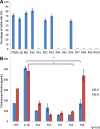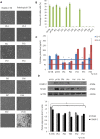Comparative Analyses of Pharmaceuticals or Food Supplements Containing Chondroitin Sulfate: Are Their Bioactivities Equivalent?
- PMID: 31494830
- PMCID: PMC6822805
- DOI: 10.1007/s12325-019-01064-8
Comparative Analyses of Pharmaceuticals or Food Supplements Containing Chondroitin Sulfate: Are Their Bioactivities Equivalent?
Abstract
Introduction: Oral supplementation of chondroitin sulfate (CS) and glucosamine (GlcN), symptomatic slow-acting molecules, is recommended by European Society for Clinical and Economic Aspects of Osteoporosis and Osteoarthritis and Musculoskeletal Diseases (ESCEO) and other European Union (EU) guidelines for the restoration of the articular cartilage surface in patients affected by osteoarthritis (OA). They are commercialized as pharmaceutical grade products and as food supplements in combination with plant extracts hyaluronic acid, methylsulfonylmethane, and other components. Food supplements do not need to undergo the strict regulatory controls of pharmaceutical grade products; thus, composition and contaminants that could be present may not be evidenced before commercialization and these uncertainties may give rise to concerns about the bioactivity of these formulations.
Methods: In this paper 10 different food supplements (FS) from diverse European countries were analyzed in comparison with two pharmaceutical grade products (Ph) using updated analytical approaches and biochemical cell-based assays. The purity, the titer, and the origin of CS in Ph and FS samples were initially assessed in order to successively compare the biological function. Both food supplements and pharmaceutical formulations were tested in vitro, using the same final CS concentration, on primary chondrocytes and synoviocytes in terms of (i) cell viability, (ii) activation of the NF-κB-mediated inflammation pathway, (iii) cartilage oligomeric matrix protein (COMP-2), IL-6, and IL-8 production.
Results: All the FS presented a certain insoluble fraction; the CS and the GlcN contents were lower than the declared ones in 9/10 and 8/10 samples, respectively. All FS contained keratan sulfate (KS) at up to 50% of the total glycosaminoglycan amount declared on the label. Primary cells treated with the samples diluted to present the same CS concentration in the medium showed cytotoxicity in 7/10 FS while Ph preserved viability and reduced NF-κB, COMP-2, and secreted inflammatory cytokines.
Conclusion: Among all samples tested, the pharmaceutical grade products demonstrated effective modulation of biomarkers counteracting the inflammation status and improving viability and the physiological condition of OA human primary chondrocyte and synoviocyte cells. In contrast to that, most FS were cytotoxic at the tested concentrations, and only 3/10 of them showed similarities to Ph sample behavior in vitro.
Funding: This work was partially supported by PON01_1226 NUTRAFAST, MIUR Ministero dell'Università e della Ricerca Scientifica. Bioteknet financed two short-term grants for graduate technicians. The journal's Rapid Service and Open Access fees were funded by IBSA CH.
Keywords: Chondroitin sulfate; Food supplements; Glucosamine; HPAE-PAD; Human primary chondrocytes; Human primary synoviocytes; Keratan sulfate; NF-κB mediated inflammation pathway; OA in vitro model; Rheumatology.
Figures





Similar articles
-
European chondroitin sulfate and glucosamine food supplements: A systematic quality and quantity assessment compared to pharmaceuticals.Carbohydr Polym. 2019 Oct 15;222:114984. doi: 10.1016/j.carbpol.2019.114984. Epub 2019 Jun 20. Carbohydr Polym. 2019. PMID: 31320062
-
Chondroitin Sulfate in USA Dietary Supplements in Comparison to Pharma Grade Products: Analytical Fingerprint and Potential Anti-Inflammatory Effect on Human Osteoartritic Chondrocytes and Synoviocytes.Pharmaceutics. 2021 May 17;13(5):737. doi: 10.3390/pharmaceutics13050737. Pharmaceutics. 2021. PMID: 34067775 Free PMC article.
-
Inappropriate claims from non-equivalent medications in osteoarthritis: a position paper endorsed by the European Society for Clinical and Economic Aspects of Osteoporosis, Osteoarthritis and Musculoskeletal Diseases (ESCEO).Aging Clin Exp Res. 2018 Feb;30(2):111-117. doi: 10.1007/s40520-017-0861-1. Epub 2017 Nov 24. Aging Clin Exp Res. 2018. PMID: 29177637 Free PMC article. Review.
-
Oral chondroprotection with nutraceuticals made of chondroitin sulphate plus glucosamine sulphate in osteoarthritis.Carbohydr Polym. 2014 Aug 30;109:126-38. doi: 10.1016/j.carbpol.2014.03.033. Epub 2014 Mar 27. Carbohydr Polym. 2014. PMID: 24815409 Review.
-
The human pharmacokinetics of oral ingestion of glucosamine and chondroitin sulfate taken separately or in combination.Osteoarthritis Cartilage. 2010 Mar;18(3):297-302. doi: 10.1016/j.joca.2009.10.013. Epub 2009 Nov 10. Osteoarthritis Cartilage. 2010. PMID: 19912983 Free PMC article.
Cited by
-
Drug Screening Implicates Chondroitin Sulfate as a Potential Longevity Pill.Front Aging. 2021 Sep 8;2:741843. doi: 10.3389/fragi.2021.741843. eCollection 2021. Front Aging. 2021. PMID: 35821992 Free PMC article. Review.
-
Arctigenin prevents the progression of osteoarthritis by targeting PI3K/Akt/NF-κB axis: In vitro and in vivo studies.J Cell Mol Med. 2020 Apr;24(7):4183-4193. doi: 10.1111/jcmm.15079. Epub 2020 Feb 24. J Cell Mol Med. 2020. PMID: 32090454 Free PMC article.
-
Molecular Fingerprint of Human Pathological Synoviocytes in Response to Extractive Sulfated and Biofermentative Unsulfated Chondroitins.Int J Mol Sci. 2022 Dec 14;23(24):15865. doi: 10.3390/ijms232415865. Int J Mol Sci. 2022. PMID: 36555507 Free PMC article.
-
Differential Secretome Profiling of Human Osteoarthritic Synoviocytes Treated with Biotechnological Unsulfated and Marine Sulfated Chondroitins.Int J Mol Sci. 2020 May 26;21(11):3746. doi: 10.3390/ijms21113746. Int J Mol Sci. 2020. PMID: 32466468 Free PMC article.
-
Osteoarthritis in cats: what we know, and mostly, what we don't know. . . yet.J Feline Med Surg. 2025 Jul;27(7):1098612X251347999. doi: 10.1177/1098612X251347999. Epub 2025 Jul 20. J Feline Med Surg. 2025. PMID: 40685570 Free PMC article. Review.
References
-
- Chevalier X, Conrozier T. Access to highly purified chondroitin sulfate for appropriate treatment of osteoarthritis: a review. MA@PoC. 2017;1(1):134–144.
Publication types
MeSH terms
Substances
Associated data
Grants and funding
LinkOut - more resources
Full Text Sources
Medical
Miscellaneous

